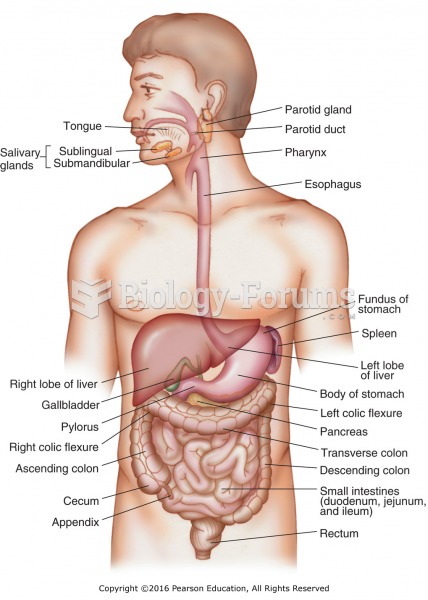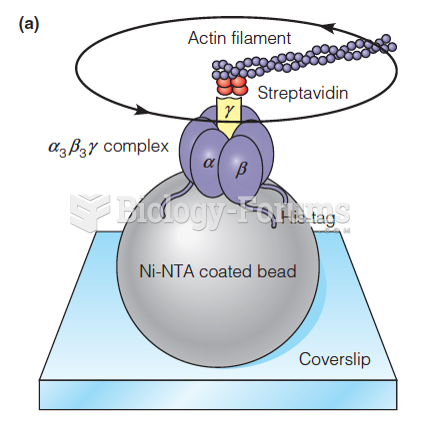|
|
|
The ratio of hydrogen atoms to oxygen in water (H2O) is 2:1.
If all the neurons in the human body were lined up, they would stretch more than 600 miles.
In Eastern Europe and Russia, interferon is administered intranasally in varied doses for the common cold and influenza. It is claimed that this treatment can lower the risk of infection by as much as 60–70%.
Signs of depression include feeling sad most of the time for 2 weeks or longer; loss of interest in things normally enjoyed; lack of energy; sleep and appetite disturbances; weight changes; feelings of hopelessness, helplessness, or worthlessness; an inability to make decisions; and thoughts of death and suicide.
The average human gut is home to perhaps 500 to 1,000 different species of bacteria.






